This is where our "road guard," Ali, went to work. Ali and his horse fell behind and directed drivers to give us some space. With large trucks, loud horns and the like, there was a strong desire by my camel to be somewhere else. We, of course, were going to go where the camels went. Linda's camel was unconcerned with vehicles.
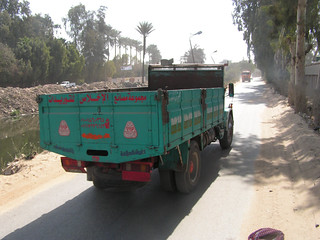

Ali only had to get into one argument with a truck driver who didn't want to give the small caravan much space. He appeared to speak "trucker talk" quite well.
We had left one legislative district and were entering another where Linda saw an election banner for this lady. She is running under the mostqbalwatan party label. That means "future party." You can look the party up here and you'll see they favor the Sisi Administration. (Google will translate the Arabic on the site for you if you coax it just a bit.)
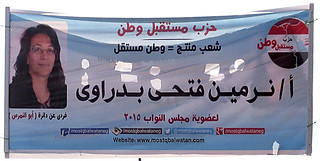

We soon were off the truck route and passed through a small village area (bottom green arrow) that lies on the edge of the desert. It occupies, perhaps, 200 yards from the canal's edge to the open sand.


This was an area that we had frequently see from the distance and were happy to see more closely. Yes, we actually rode our camels right down the middle of this street. Cafe and market customers waved and greeted us with "Welcome in Egypt!" One Egyptian even took a photo of us crazy foreigners.
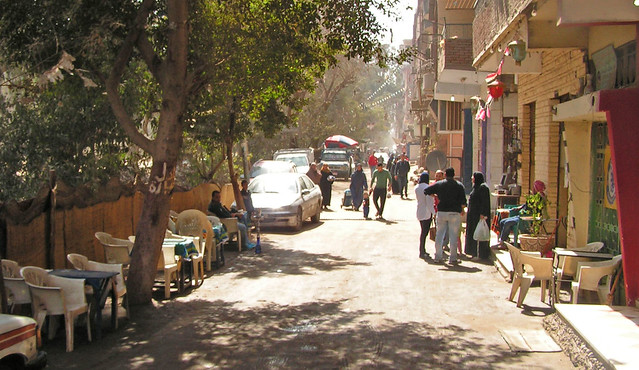
The cooking gas truck had apparently come through not long before us as many women were bringing home a fresh bottle. You might notice that the lady in the center of the picture above has a cart on which she can pull the steel bottle.
Other women were using the more traditional means of transport.
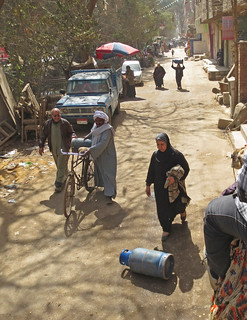
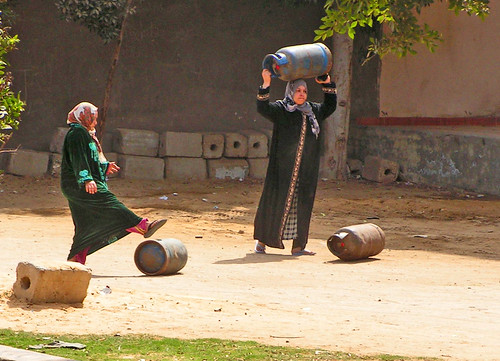
Availability and distribution of this commodity played no small role in the last two changes of government here. See this 2010 article and this from 2014.
Most of the commerce appeared to take place on the single road that we were travelling but just as in our own neighborhood, each of the side streets would make for an interesting walk on foot.
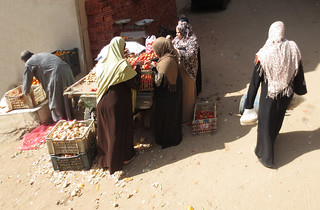
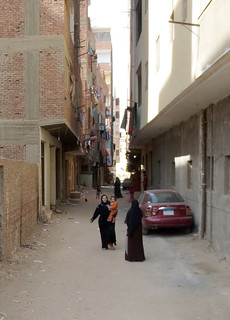
Beyond the village, the next couple of miles are occupied with tiny settlements, large estates, horse farms, and places like Dondon Park and Sakkara Country Club. Many of the "country homes" are built in a modern style, but some employ a dome architecture reminiscent of the Fatimid period.
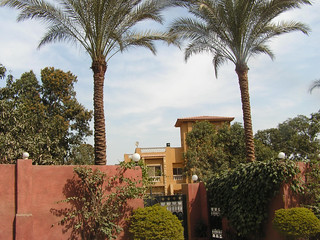
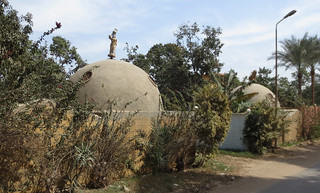
If you are interested in building, this 1-acre lot can be had for around $200,000.
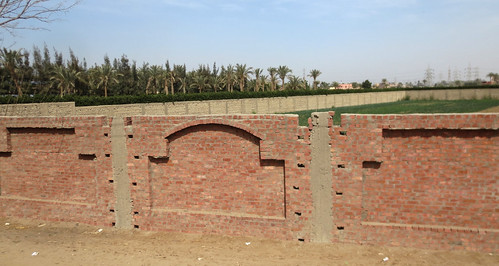
These next two homes represent the lower and middle price points for homes in the area:

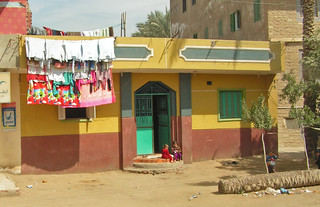
On the southern end of our ride, traffic is less and is dominated by the Indian Tuk-Tuk.
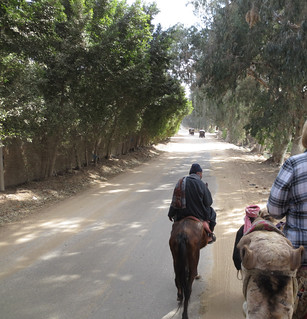
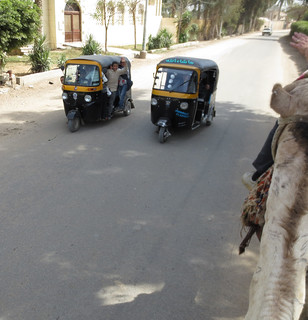
Perhaps you were wondering how many people can ride in a Tuk-Tuk? When we ride in one it only fits the two of us and the driver. Egyptians are more creative when it come to packing people into vehicles.
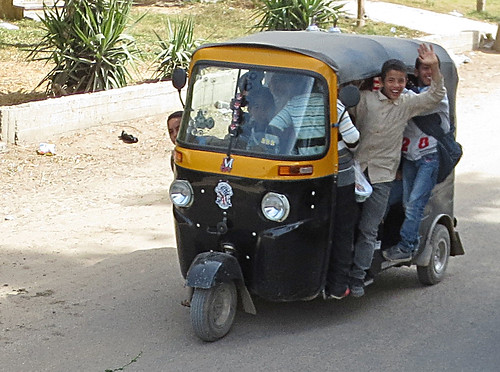
The drivers are usually young and one pound, Egyptian, (15 cents) will usually get you where you are going. Fast, fuel-efficient and easy to maintain. What's not to like about them. And they are certainly a lot more fun than driving a donkey cart.


It was just over two hours since we departed and this was the end of our ride.

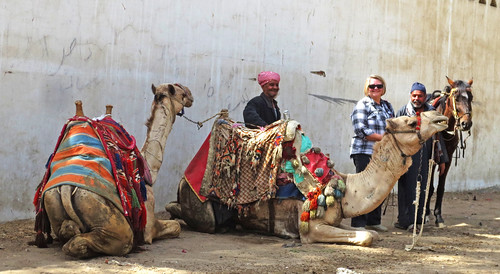
We found a shady spot to sit and wait for Gomaa to pick us up. We had wisely not signed up for a round trip. It is now three days since we stepped down from the camels and we can almost walk normally. For the first two days after the ride, whenever I sat down on the bed, I seemed to sit on one of the mattress buttons - except the mattress doesn't have any buttons. Neither do the dining room chairs. But I am almost fully recovered now.





No comments:
Post a Comment